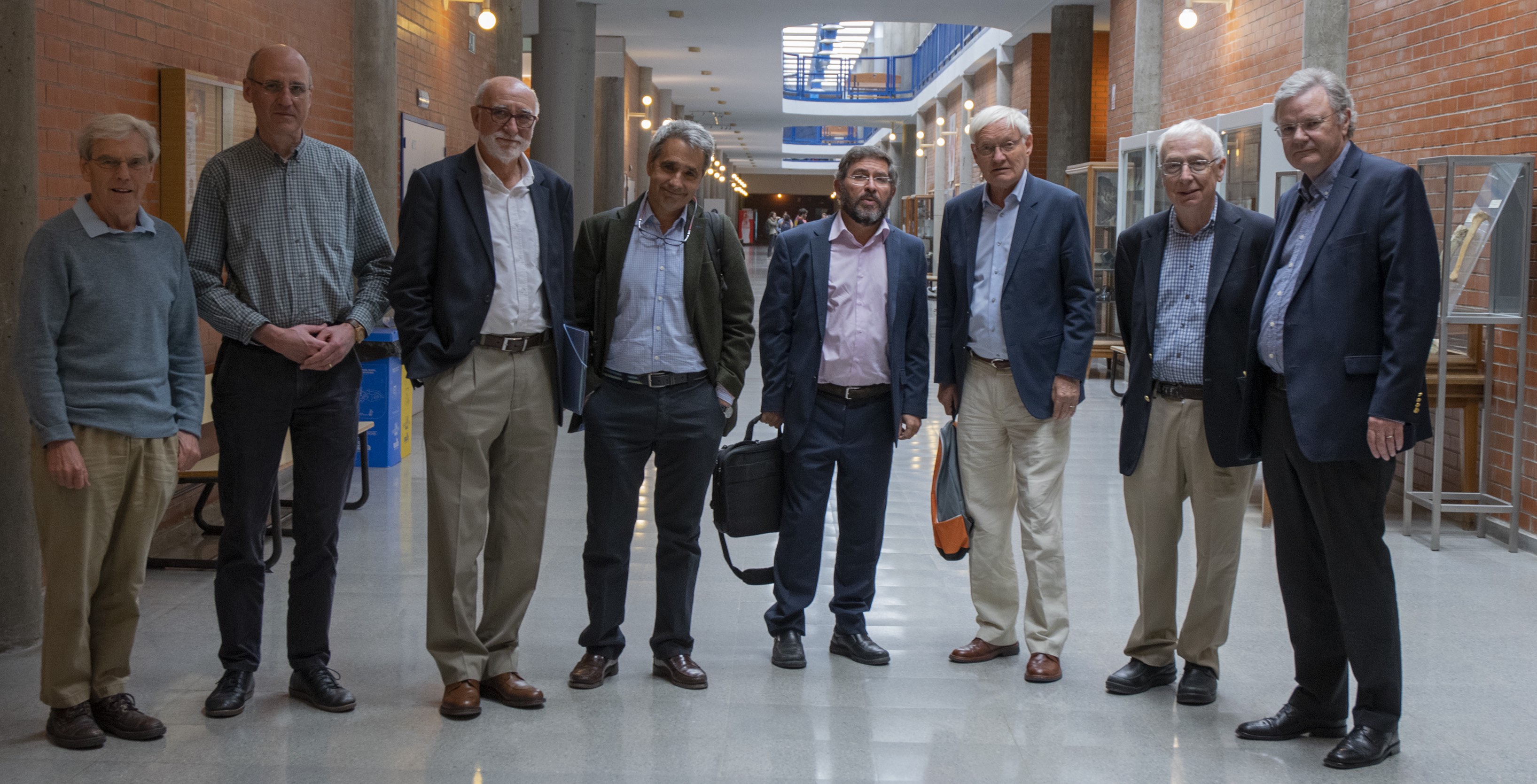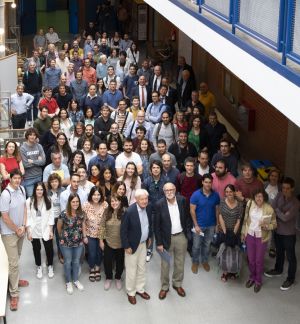Menéndez ha reiterado el compromiso del CSIC en la actualización de infraestructuras como el nuevo criomicroscopio electrónico del Centro Nacional de Biotecnología, para mantener la competitividad internacional de nuestros investigadores, y destaca la continua y fructífera colaboración con la Universidad Autónoma de Madrid en la inauguración de las jornadas. Por su parte, Garesse ha mostrado su apoyo para mantener la excelencia del campus UAM-CSIC y apela al apoyo de las universidades para promover ciencia puntera en sus instituciones como principal motor de desarrollo de la sociedad.
Cabe destacar la presencia de ponentes de renombre internacional como los investigadores Wolfgang Baumeister, Alasdair Steven y los profesores Joachim Frank y Richard Henderson, galardonados en el año 2017 con el Premio Nobel de Química por el desarrollo de la técnica de la criomicroscopía electrónica para la determinación de la estructura de biomoléculas en alta resolución. El Prof. Frank ha presentado un viaje por la historia de la criomicroscopía, con el repaso a los avances de la técnica desde los inicios de la tinción negativa hasta los altos niveles de resolución que se alcanzan en la actualidad, gracias también al desarrollo de potentes herramientas computacionales. Henderson además, ha insistido en la importancia de incrementar el número de criomicroscopios accesibles para avanzar en biología estructural, ya qué esta disciplina es fundamental para entender los mecanismos de actuación y la función de componentes celulares muy relevantes en biomedicina.
A lo largo de estos dos días, más de 30 científicos expertos en el uso de la criomicroscopía electrónica en diferentes campos han repasado el estado actual de este método de análisis, ofreciendo una perspectiva actual de las múltiples aplicaciones de la técnica para responder a problemas científicos tan diversos como el cáncer, la estabilidad genómica, las infecciones virales o la enfermedad de Parkinson.
Las jornadas, además, rinden un merecido homenaje al profesor de investigación del CSIC José L. Carrascosa, artífice del desarrollo de la criomicroscopía electrónica en España y en el Centro Nacional de Biotecnología (CNB-CSIC). En los últimos 25 años, Carrascosa y su grupo de investigación han contribuido de manera indiscutible al desarrollo de la microscopía, poniendo en marcha el uso de esta metodología desde la determinación de estructuras subcelulares hasta llegar a descifrar las estructuras atómicas de virus como el bacteriofago T7. Sus estudios han permitido obtener información acerca de las propiedades químicas y funcionales de los complejos que se ensamblan durante el proceso de maduración del virus para su utilización en biomedicina y biotecnología.

De izquierda a derecha: Richard Henderson, LMB, Reino Unido y premio Nobel de Química 2017; Miquel Coll, investigador del IBMB-CSIC; José L. Carrascosa; José María Valpuesta, José María Carazo, investigadores del CNB-CSIC; Joachim Frank, Universidad de Columbia, EEUU y premio Nobel de Química 2017; Alasdair Steven, NIH, EEUU, y Wolfgang Baumeister, MPI, Alemania. (Crédito: Inés Poveda, CNB-CSIC)
El CNB, cantera de expertos mundiales en criomicroscopía electrónica
El departamento de Estructuras Macromoleculares en el CNB-CSIC acoge en la actualidad 13 grupos de investigación con más de 25 investigadores cuyos proyectos se enfocan en la resolución de problemas de biomedicina a través del uso de la criomicroscopía electrónica. Por este departamento han pasado en los últimos 25 años más de 30 investigadores que se han formado en el campo y que desarrollan su carrera en otros reconocidos centros de investigación nacionales o internacionales. Muchos de ellos, así como múltiples colaboradores y amigos, se han querido sumar al homenaje a José L. Carrascosa, considerado el padre de la técnica en España con su participación en este simposio, dónde se han podido escuchar las múltiples posibilidades que ofrece la criomicroscopía electrónica para la resolución de preguntas científicas de ámbito variado. José María Valpuesta, co-organizador del simposio y director del Departamento de Estructura de Macromoléculas en el CNB ha remarcado la calidad y competitividad científica de los investigadores españoles en el área y cómo la adquisición en el CNB-CSIC de equipos de última generación va a permitir multiplicar el potencial científico de los proyectos en desarrollo.






